The Jammu and Kashmir government’s campaign to retrieve the state land encroached upon by individuals, institutions and communities is at its peak. Even though the assurance has been around that the marginal and weaker sections would stay untouched, the campaign seemingly makes no distinction, reports Yawar Hussain
On a wintery morning of January 19, 2023, Sultan Ahmad Dar, living on top of a Karewa in the Kanidajan area of Budgam was glued to his mobile phone disseminating the statement of Lt Governor Manoj Sinha that poor people with small patches of state land would not be evicted in the ongoing drive to be completed by the end of January 2023.
Sinha’s statement, however, didn’t bring a smile to Sultan’s face as he has been already dispossessed of the three kanal land a week ago on which his grandfather Mohiuddin Dar in 1959 had started growing apple trees, an orchard which now is the family’s main source of income.
While Sultan watched the LG speak in one corner of Jammu and Kashmir, it was another man, Naresh Singh in Jammu’s Kathua, who also stood and watched in coldness the speech which might have saved his four kanal piece of land, only if the statement had come earlier. His family had been sowing rice on the land for close to a decade now.
While the LG spoke on the government’s intent to only go after the “big fish”, who have since 1947 “usurped” the state land using their power and position, the Srinagar district administration’s encroachment list also put the four odd kanals of the Raj Bhawan in Cheshmashahi under the “encroachment” tab. In summers, the highest seat of power the Bhawan has housed the families of all the Governors and now LG’s of Jammu and Kashmir including LG Sinha’s.
These patches of land, along with lakhs of other people across Jammu and Kashmir, came into question following Revenue Secretary, Vijay Kumar Bhiduri’s circular, which sets out a daily 4 pm deadline for revenue officers at the divisional and district level to update the government at on day’s evictions details.
In districts, the Deputy Commissioners have set out their own targets for the Tehsildars. Credit goes to the revenue officials across Jammu and Kashmir who have literally mapped every inch of the erstwhile state and offered fraction-wise details of the current status of the land resource. They have located every single unauthorised construction or possession, including that of the government itself. Interestingly, the UN office in Srinagar is also an encroachment. This voluminous data is going to be a huge digital resource for future use or abuse.
The fulfilment of daily set targets is visible on the ground where the locals are also seen resisting the officials who have come to evict them.
In the Payer village of Pulwama, scenes of people physically stopping officials, who are cutting their trees, have come to the fore. These subordinate officials on the ground are walking an extra mile in the line of duty, to implement the orders.
“We are following the orders from the top. We too live in the same district but are helpless. Seniors would initiate action,” a lower-rung Revenue department official said.. “Where will we plead our case in these times.”
The retracting statement of Bidhuri’s that only commercial land is being retrieved from encroachers coupled with LG’s assurances have fallen flat on the ground as the Revenue officials across Jammu and Kashmir are evicting all.
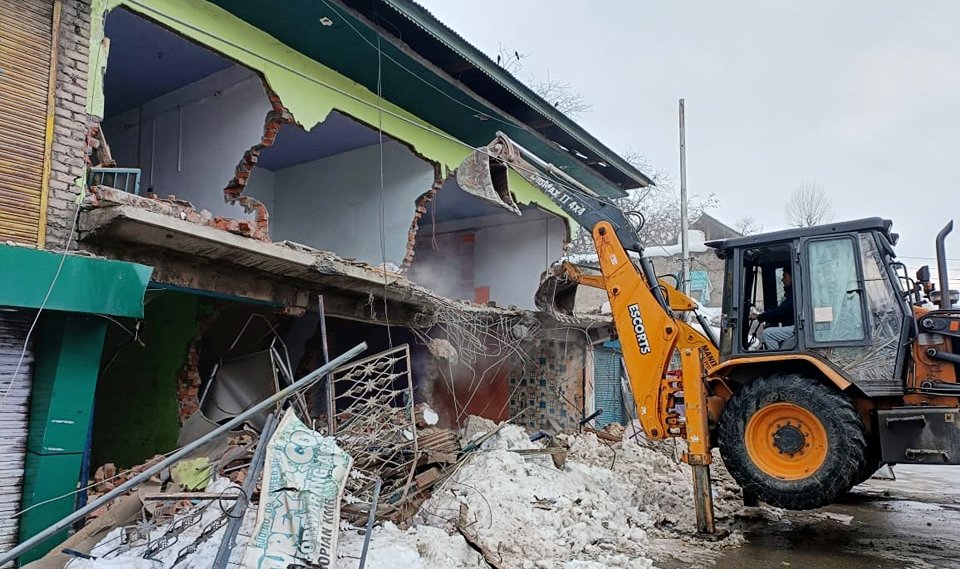
Excluding Poor?
The J&K Bharatiya Janata Party Chief Ravinder Raina, whose party represents the Reasi district in the Lok Sabha, said that the people with less than 4 kanals of state land wouldn’t be troubled.
However, in Kalimasta village of Gool Gulabgarh in Reasi district, Ghulam Mohammad Chopan’s mountainous single-storey house with just two kanals of land around it has been declared as state land.
The officials, he said, came and wrote on a big stone at the border of “his piece of land” that it belonged to the state. “This land only fetched me vegetables and some fruit along with maize. The family survived on it. We couldn’t produce enough to sell.”
Chopans have been living on the land for over a century now. No subsequent government has troubled them. “People only remember us when they need votes,” Chopan said. “Officials seldom come here when we need any service. Today, they have come but only to make our lives more miserable.”
In Boniyar in north Kashmir’s Baramulla district, the Executive Magistrate 1st Class issued a warning to the people stating: “If any person fails to remove the encroachment, the department would swing into action and people have to pay the charges of the same.” Similar warning circulars have been issued in other districts too.
The land of Sultan, Singh and Chopan is registered as state land in revenue records, but under the laws applicable before August 5, 2019, when the state’s special status was watered down, the family had rights to cultivate it.
Land Distribution
A revenue settlement during the last Dogra ruler Hari Singh’s time was recorded as Shri Sarkar Dulatmandar meaning ‘our government is wealthy and rich’ as it has enough land and can utilise it for common purposes of its citizens.
This laid the foundation, if not the relief, for the common masses who after the 1950s Land to Tiller started reaping the benefits.
In 1947, Jammu and Kashmir was dominated by landlords who were around 13,000 in number.
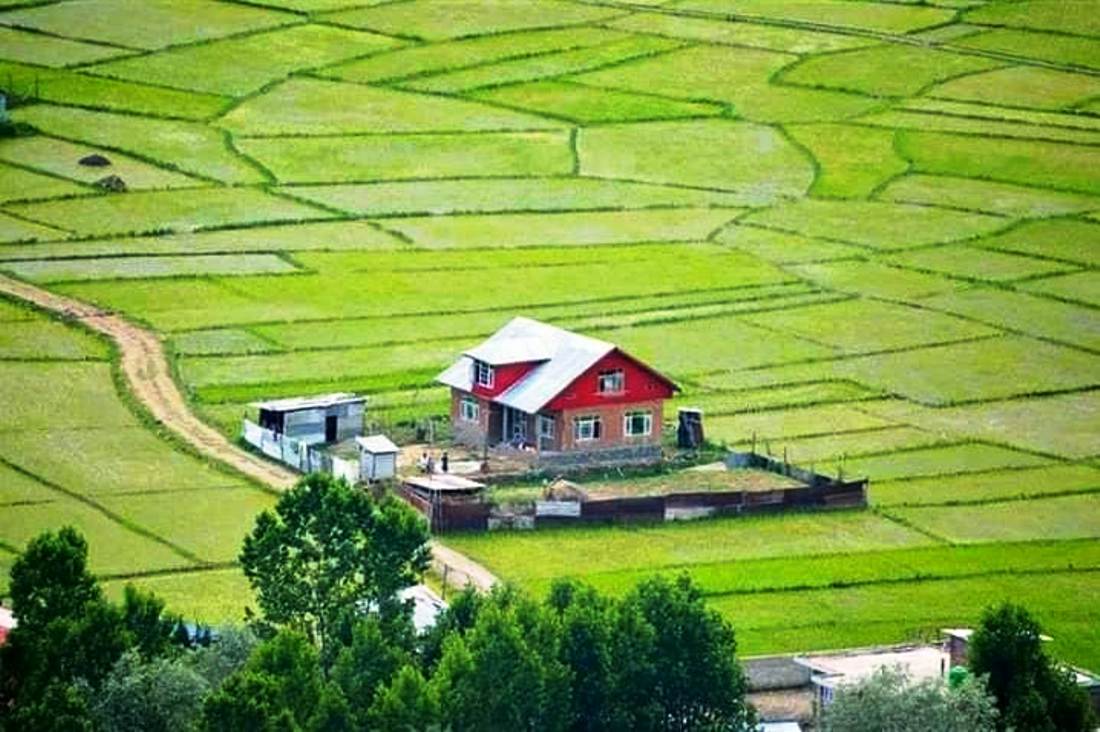
Out of them, 396 were the biggest landlords, called jagirdars, to whom were alienated the land and other revenues. The area assigned to them was called jagir. The jagirdars were not owners of the land; they were, however, owners of the revenue of the areas assigned to them. Along with the alienation of land revenue, the state also transferred the people of the jagir to the control of the jagirdar.
The remaining 9000 landlords were owners of the land known as called chakdars, and the land owned by them was known as chak. All the villages suffixed Chak in their names were the Chak lands of yore. Besides the jagirdars and chakdars, there was also a class of cash grantees called mukarares, numbering 2,347. The number of landless peasants (called kashtkars) was around 300,000. Apart from this, 250,000 peasants cultivated a part of the land while the ownership rested with the jagirdars, maufidars chakdars.
It was these jagirdaris and chakdaris that the Jammu and Kashmir government ended from 1948 to 1950.
However, the land inherited by the State of Jammu and Kashmir from the Dogra Maharaja, whose family had bought the Kashmir valley from British under the infamous Treaty of Amritsar in 1846, became the property of the new government. The land came to be known as State land (Khalisa Sarkar, Nuzool and Shamilat), and Khacharie (Grazing land).
However, following the partition and subsequent accession of Jammu and Kashmir with the union of India, Evacuee property also became the property of the government of Jammu and Kashmir.
In the years leading up to ousting of the Dogra rule in Jammu and Kashmir and then partition’s migrations, the Evacuee property was encroached on in Jammu’s Kathua, Samba, Jammu, Udhampur and Rajouri districts.
In the succeeding years, the government under JK Evacuees (Administration) of Property Act came out with Order 578-C of 1954 read with order no 371 of 1971 declaring that 85 lakh kanals of evacuee land illegally occupied in the districts of Jammu, Udhampur, Kathua, Samba and Rajouri will not be disturbed and occupants thereof instead declared as local allottees, without any liability towards payment of rent let alone the premium.
Like evacuee land, state land too had been encroached upon by common peasants, who were still not completely out of the clutches of landlords to whom they were paying rent.
The state land encroached upon by the common masses was again given away by the government to poor people twice. Under LB-6 and LB-7 both dated 05.06.1958 and S-432 of 1967 the illegal occupants of state land were conferred initially with the rights of tenants-at-will followed by a grant of ownership rights.
Similarly, farmers took possession of state land and khacharie land under the agrarian reforms of 1950 and 1976, and a “Grow More Food Policy” under which cultivable wasteland was allotted to landless peasants with partial rights.
The Grow More Food Policy was introduced by the government to counter famines and fight the scarcity of food. The farmers were lured by the government of the time to cultivate the state land and use Khacharie land for grazing their cattle.
“The government back then and also the subsequent one’s assured our family that land wouldn’t be taken back but we were informed that we can’t sell the land. We never thought of it as our property but as a means of earning a livelihood,” Naresh Singh of Kathua said, adding that when the government can’t provide them jobs then why was it taking away their source of sustenance?
It is these promises of not ejecting people by the State of Jammu and Kashmir that are being undone in the current eviction drive.
The drive has the flip side too.
Former Law Secretary Muhammad Ashraf Mir said legally the land being taken away from the encroachers in the current drive is valid. “It is an issue where a humanitarian and compassionate view needs to be taken by the government. They aren’t bound by law,” he said.
The West Pakistan Refugees, who struggled for citizenship of Jammu and Kashmir since 1947, were elated on August 5, 2019, but now they too have been served notices by the government that the land held by them for cultivation is the state’s property. They have been asked not to cultivate the land after this season’s crop is harvested.
While the pathway for the current drive opened on August 5, 2019, the changes in land laws were affected a year later.
Changed Laws
In October 2020, the Jammu and Kashmir Reorganisation (Adaptation of Central Laws) Third Order and the Jammu and Kashmir Reorganisation (Adaptation of State Laws) Fifth Order, 2020, repealed 12 land laws that provided safeguards to farming communities.
Among them was the historic Big Land Estate Abolition Act 1950 (informally known as land to tiller), which paved the way for rural prosperity in the former state.
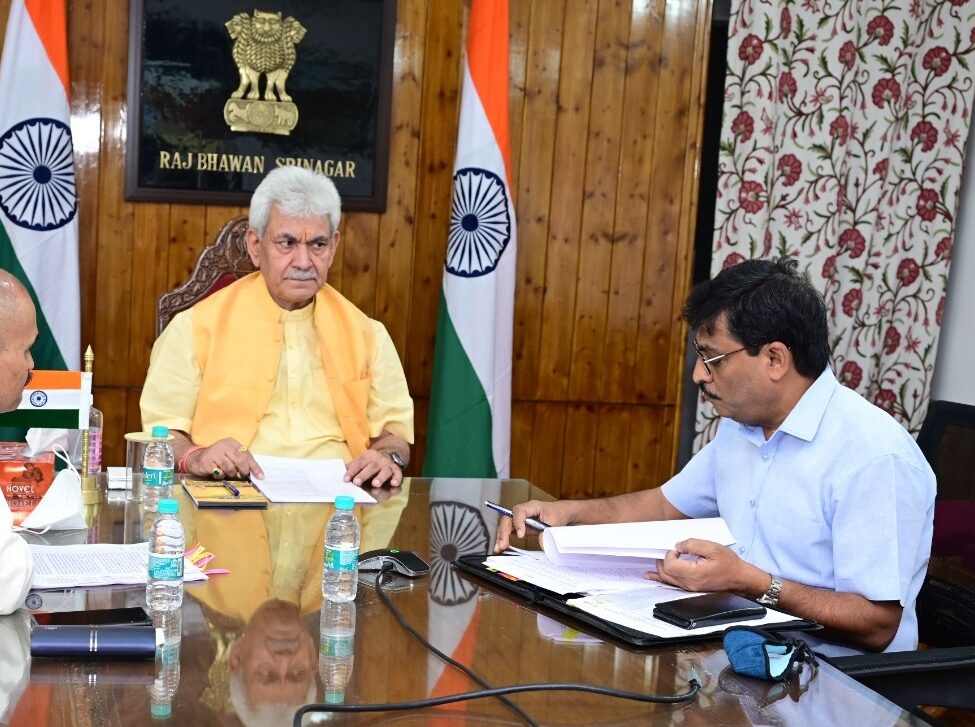
The erstwhile Land to Tiller placed a ceiling of maximum of 22.75 acres on land holdings. Land that surpassed this limit was automatically transferred to the tiller, who was not required to pay any compensation to the ‘original’ owner.
These reforms were first envisioned and articulated in the Naya Kashmir (New Kashmir) Manifesto in 1944 by the National Conference under Shiekh Mohammad Abdullah.
According to research done by Dr Ashish Saxena in Jammu, during the 1950s-70s, out of the total surplus land of 672 kanals mainly taken away from Rajputs and Mahajans, 70.24 per cent was allotted to SC (Scheduled Caste) tenants predominantly Hindus. A radical inter-generational shift in the occupation pattern of the SCs in terms of landless agricultural labourers to land-owning peasants from grandfather’s generation (nil) to 47.1 per cent. The reforms also gave land to Muslim peasants in Kashmir where the jagirdaris of Kashmiri pandits and Dogra Hindus were ended.
Another significant law that was repealed in October 2020, was the Jammu and Kashmir Tenancy Act, 1980, which stayed all applications or proceedings relating to ejecting tenants.
The order also did away with the Jammu and Kashmir Common Lands (Regulation) Act, 1956, which regulated the rights of common land such as roads, streets, lanes, pathways, water channels, drains, wells, tanks or any other source of water supply to villagers.
The Jammu and Kashmir Alienation of Land Act, 1938 — a law related to the transfer of agricultural land for non-agricultural purposes —also ceased to operate.
The law that prohibited the conversion of land into orchards and existing orchard land for other uses, without prior government permission, termed the Jammu and Kashmir Prohibition on Conversion of Land and Alienation of Orchards Act, 1975, has also been repealed.
The other Acts that are no longer effective in are the Jammu and Kashmir Consolidation Of Holdings Act, 1962, the Jammu and Kashmir Flood Plain Zones (Regulation and Development) Act, the Jammu and Kashmir Land Improvement Schemes Act, the Jammu and Kashmir Prevention Of Fragmentation Of Agricultural Holdings Act, the Jammu and Kashmir Right Of Prior Purchase, Act, the Jammu and Kashmir Utilisation Of Lands Act and the Jammu and Kashmir Underground Public Utilities (Acquisition Of Rights Of User In Land) Act.
The government has also set up a new body called the J&K Industrial Development Corporation, under the Jammu and Kashmir Industrial Development Act, to speed up industrial development, invite investment, set up industrial units and promote corporate farming. The modified law permits the corporation to acquire land for setting up industrial units.
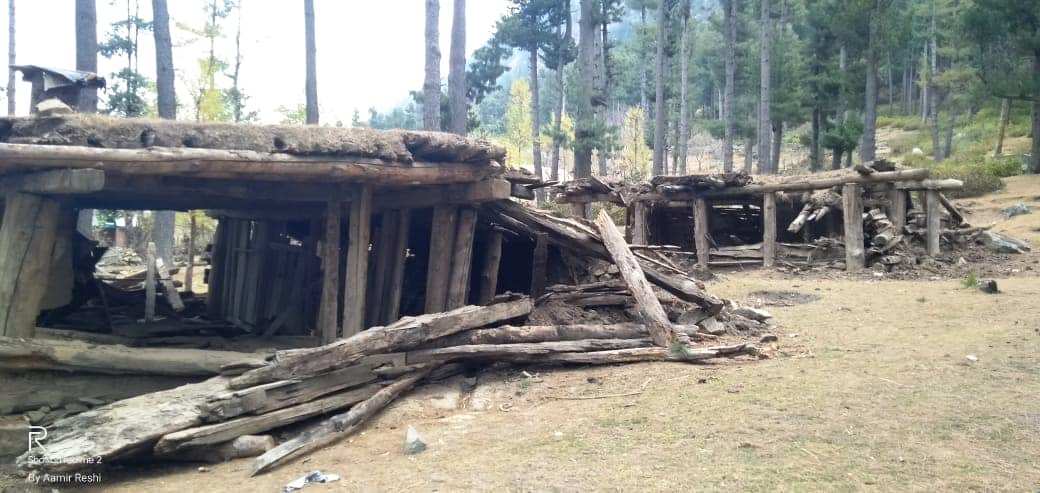
However, if it is unable to acquire the land by agreement, the government can order proceedings under the Right to Fair Compensation and Transparency in Land Acquisition Rehabilitation and Resettlement Act, 2013. Under this Act, a penalty is issued in case anyone obstructs any person with whom the corporation has entered into a contract.
Following this, JK State Industrial Development Corporation is retrieving 723 kanals of state land for new industrial clusters in the Buddhi area of Kathua which includes Barwal and Jandore villages.
“In adjoining Langate and Govindsar villages, many of the industrial units set up by SIDCO are inoperative. Clearly, the non-local investors are coming here to enjoy government subsidies and incentives,” Amrish Jasrotia, a local activist, said.
Also, the land being taken away in the current drive is in use for agriculture and horticulture.
Under the amended Jammu and Kashmir Land Revenue Act in 2020, the definition of agriculture and allied activities have been extended to raising crops including food and non-food crops, fodder or grass, fruits, vegetable, flowers, animal husbandry, dairy, poultry farming, stock breeding, fishery, and agro-processing related activities. The modified law disallows the sale as well as gift or exchange or mortgage of agricultural land to a non-agriculturist.
However, the law has carved out exemptions through which such a transfer can be permitted. A newly-formed revenue board will notify the detailed procedure, prescribe a form and fix the fee for conversion of agriculture to non-agricultural purposes.
The government can allow the transfer of agricultural land in favour of an eligible public trust established for charitable purposes and which is non-profitable in nature as well as for education and healthcare services.
It can also, via notification, allow the transfer of land to a person, institution or corporation, for industrial or commercial or housing purposes or agricultural purposes meant for the development of the UT. Non-agriculturists who have had the land transferred to them and intend to use it for non-agricultural purposes are required to now do so within five years.
Roshni Land
While lakhs of people encroached on the state and khacharie lands post the despotic rule, the legislature of Jammu and Kashmir in 2001 passed the Jammu and Kashmir State Land (Vesting of Ownership to the Occupants) Act 2001 which came to be known as the Roshni Act and more recently as the Roshni scam.
The law paved the way for transferring ownership of state land to its occupants for a fee with the objective of earning revenue to finance power projects.

The law was a result of the Farooq Abdullah government’s failure to manage the financial closure of the ambitious Baglihar power project forcing the government to think of ideas that can generate capital locally. The Farooq-led government in 2001 decided to hand over rights to people occupying the state land in lieu of market costs. The capital would fund the power projects. The Roshni scheme continued and people started paying for the lands they held. In 2005, however, Ghulam Nabi Azad-led government decided to vest proprietary rights to anyone holding state land but without paying anything. In order to appease the land grabbers, Azad government made it mandatory for revenue officials to deliver the ownership papers on these lands to the people at their homes. It devoured the purpose from the scheme and reduced it to a historic racket. Comptroller and Auditor General did a scathing report on the scandal and eventually, in a series of petitions, the High Court found it to be in non-consonance with the principles of a fair law leading to the Act being declared null and void.
Subsequently, the revenue officials were directed to delete mutations in records done under the Roshni Act. The names of common people were deleted from revenue records and the land’s title again changed to state land.
Retrieving the encroached land started soon after the collapse of BJPDP government and the subsequent days witnessed the eviction drives taking place with vigour and consistency. In January 2022, the administration claimed to have retrieved 46,487.6 acres of state land, 13,814.4 acres of kacharai (grazing land), and 164.2 acres of common land from alleged encroachers across Jammu and Kashmir. The matter went to the Supreme Court, which stayed the evictions of former Roshni Act landholders. The government had also filed a review petition along with 70 other individual petitions.
Last year, the government through its Solicitor General informed the Apex Court that no “coercive” action would be taken against Roshni Act landholders till the court passes directions.
However, with vacations currently underway in court, the eviction drive was started targeting all the state land including Roshni and Khacharie lands. The petitioners filed a special leave petition in which the court didn’t stay the evictions but asked the UT counsel to verbally direct the administration to not demolish houses and also not disturb the Roshni Act landholders till the next hearing on January 31.
Retired Justice Muzafar Iqbal Khan, a petitioner in the Roshni case said that while a law passed by an assembly was declared null and void by a governor who had no authority, the government has been silent on paying back money to the people who got land regularised.
Cascading Effect
While the debates around legality and compassion rage on, Farooq Ahmad Ganie in the Rampora Rajpora area of Baramulla is worried about the financial loss he would have to bear after the three-kanal land has been taken away from his possession.
The land, part Khacharie and part state land, majorly housed hundreds of walnut trees he had sown which fetched him around Rs 7-8 lakhs every season.
Like Ganie, the majority of state and Khacharie landholders had employed the land for agriculture and horticulture, the mainstay of the Jammu and Kashmir economy.
With an estimated 30 lakh kanals of land being retrieved from the people, the Gross State Domestic Produce of Jammu and Kashmir is going to take a serious hit. Agriculture, interestingly, after remained stagnant for many years has started falling down as a contributor to GSDP.
Experts believe that the per capita income of Jammu and Kashmir is also going to be hit badly in the already volatile times kick-started by the August 5 and Covid-19-induced lockdowns.
Former J&K finance minister Haseeb Drabu in one of his write-ups post August 5, argues that the fact underlying Jammu and Kashmir’s better-than-national average human development indicators is that along with the land reforms, there was a massive debt write-off undertaken over a period of twenty years between 1951 and 1973. It is because of this that the incidence of indebtedness in Jammu and Kashmir is at the second lowest. Landless labour in the state is nearly absent and land ownership translating into economic empowerment has led to more than 25 per cent of the household earnings in Jammu and Kashmir coming from own cultivation. As a result, the incidence of poverty in the state is remarkably low with households living below the poverty line at 10 per cent against the all-India average of 22 per cent.
Reactions
National Conference vice president and former chief minister Omar Abdullah said that the government is trying to hide its failures under the pretext of land retrieval order, insisting the situation is going bad to worse with each passing day. “The retrieval of the land of Roshni scheme amounts to betrayal.”
Peoples Conference president Sajad Lone said the idea of retrieving state land in a rural setting is “dangerous”. Lone said that the administration cannot make people homeless and “when will these insane experiments backed by ugly muscularity end”. He added: “Occupation of State land in villages by inhabitants of a particular village is a generational practice and an irreversible reality. This practice is prevalent in the rest of the country. A sizeable percentage of the population is involved. You can’t make them homeless.”
While BJP President Ravinder Raina said the drive is a good step against land grabbers, his party colleague Yudhvir Sethi went all guns blazing against the government saying that they would hit roads and not allow the officials anywhere near the people’s lands.
The Democratic Progressive Azad Party, Jammu and Kashmir Apni Party and the Peoples Democratic Party have already hit the roads in protest along with protest marches by locals at a few places.
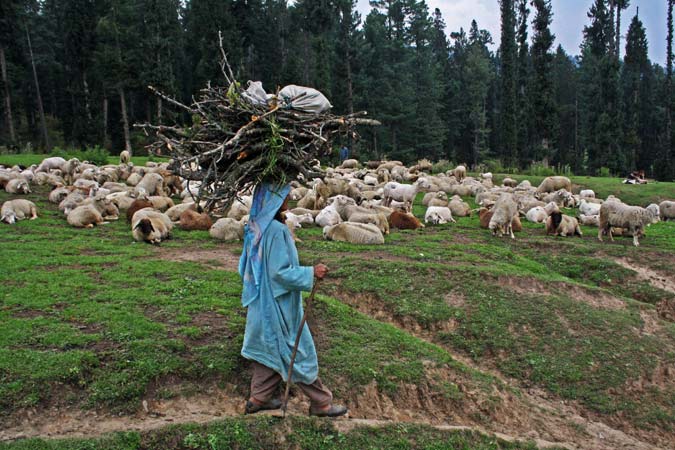
PDP President and former chief minister Mehbooba Mufti said, “Laws are created for the welfare of the public, but in Jammu and Kashmir they are weaponised to dis-empower, humiliate and punish. This latest diktat was issued because despite the government of India misusing all the agencies at its disposal & unleashing draconian laws, aren’t getting the desired results,” she said. “The collective punishment & humiliation is this government’s way of keeping people of J&K on tenterhooks & fighting for mere survival so that they don’t have the energy to fight the onslaught against their identity.”
The District Development Council Ramban unanimously adopted a resolution to oppose the administration’s order to vacate “occupants” from the state land.
The resolution passed unanimously, appealed to the LG to issue directions to the concerned authorities for preventing any adverse action which is detrimental to the farmers/landless people residing in villages and are wholly and solely dependent on the state land which they were occupying for decades.
The DDC members, in their resolution, said, “Simply branding the occupants as land grabbers is not only unjustified but misleading as well. The historical aspect needs to be taken into consideration while deciding about such sensitive issues upon which the people have built the whole edifice of their lives and spent their hard-earned money over the years in constructing a shelter for their families.”
“The admin must prevent revenue authorities from demolishing or damaging all kinds of properties mentioned above. Also frame a policy to give ownerships to such occupants by charging reasonable amount depending upon the paying capacity,” reads the resolution.















